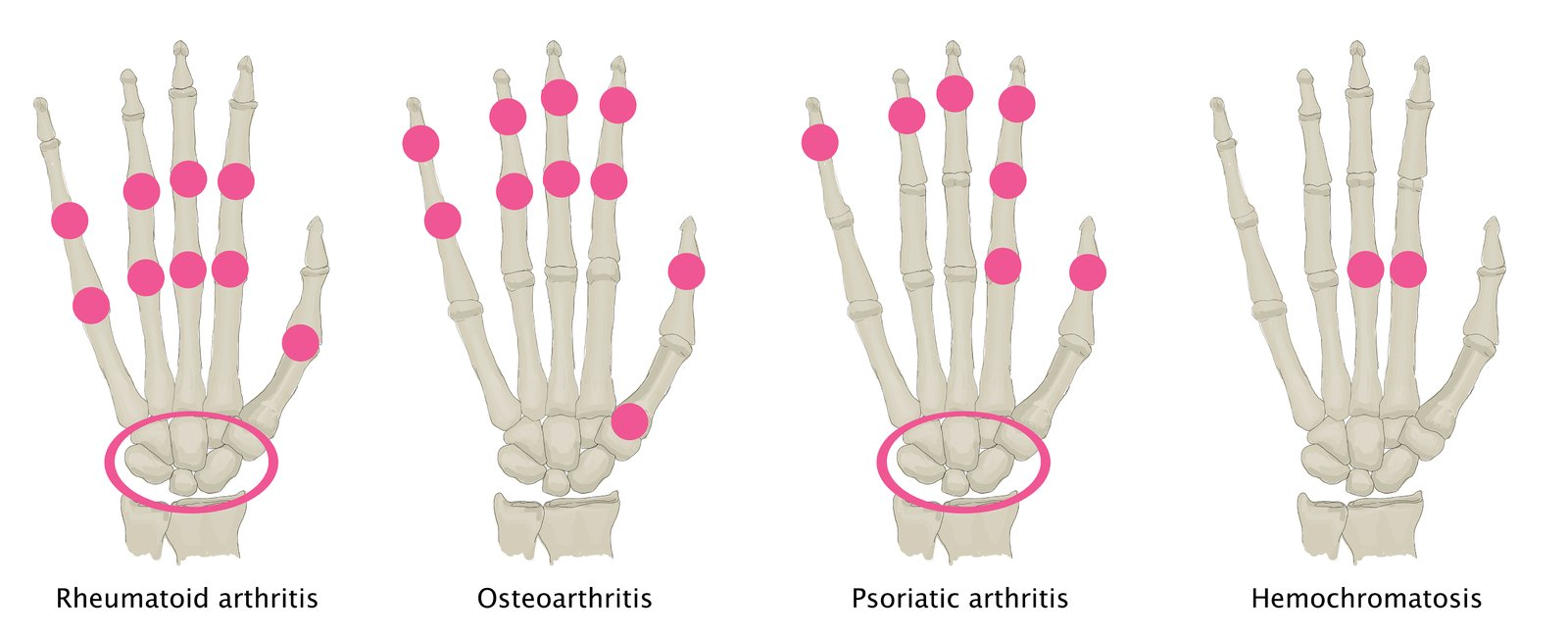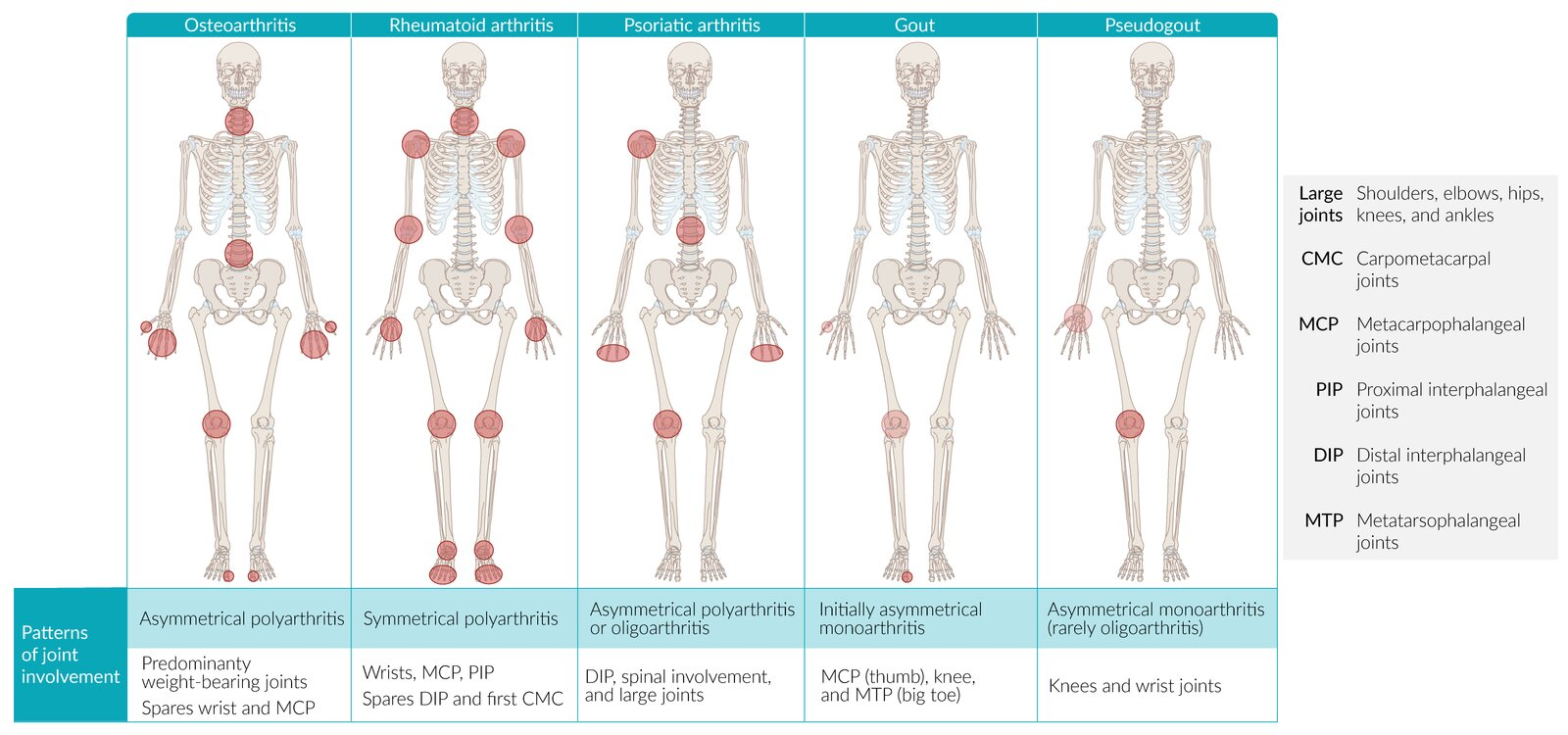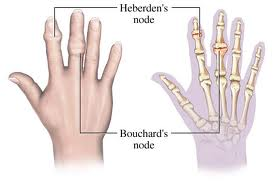Etiology
- Risk Factors
- Age: Most significant risk factor.
- Obesity: Increases mechanical stress on weight-bearing joints (knees, hips).
- Female gender: More common in women, especially post-menopause.
- Joint Trauma/Overuse: Previous injuries or occupations with repetitive stress can predispose to OA.
- Genetics: A family history plays a role, particularly in OA of the hand and hip.
Differential diagnosis
- Traditionally, osteoarthritis (OA) has been classified as a non-inflammatory or “wear-and-tear” arthritis
- The inflammation is generally less pronounced
- It doesn’t typically feature systemic inflammation markers
- It doesn’t involve autoimmune mechanisms as its primary cause
- Morning stiffness is typically shorter in duration
| Characteristic | Osteoarthritis (OA) | Rheumatoid Arthritis (RA) |
|---|---|---|
| Age of onset | >50 years | 30-50 years |
| Cause | ”Wear and tear” or trauma causing cartilage deterioration | Autoimmune inflammatory reaction against synovium |
| Primary joints affected | Weight-bearing joints (hips, knees), DIP, CMC of thumb | PIP, MCP, ankle, elbow, wrist; spares DIP Atlantoaxial subluxation |
| Joint characteristics | Hard and bony | Soft, warm, and tender |
| Pain pattern | Worse during or after activity | Worse in the morning or with inactivity |
| Stiffness | <30 minutes in morning, worse with activity | >30 minutes in morning, worse with inactivity |
| Joint symmetry | Often asymmetric, reflecting use patterns | Typically symmetric, diffuse involvement |
| Lab findings | Normal rheumatoid factor, normal anti-CCP antibody, normal ESR and CRP | Positive rheumatoid factor, positive anti-CCP antibody, elevated ESR and CRP |
| Associated signs | Heberden’s nodes (DIP), Bouchard’s nodes (PIP) | Ulnar deviation, boutonniere deformity, swan-neck deformity |
| Systemic involvement | None | Potential pulmonary and cardiac disease |
| Gender predilection | None | 2x more common in females |
| X-ray findings | Osteophytes, subchondral sclerosis, asymmetric joint space narrowing | Symmetric joint space loss, osteopenia, “apple coring” bone erosion |
| Exam findings | Effusion, tenderness | Effusion, tenderness, redness, warmth, synovitis |



Treatment
Approach
Follow a stepwise approach to treatment: Start with nonpharmacological management, followed by pharmacological and/or surgical treatment if needed.
- Nonpharmacological management: e.g., exercise and weight loss
- Pharmacotherapy
- First line: e.g., topical or oral NSAIDs
- Second line: e.g., acetaminophen or intraarticular glucocorticoid injections
- Surgical management: e.g., complete or partial joint replacement (arthroplasty) using an endoprosthesis
Tip
Pharmacotherapy should only be used as a short-term treatment in symptomatic patients; long-term therapy is associated with many adverse effects.